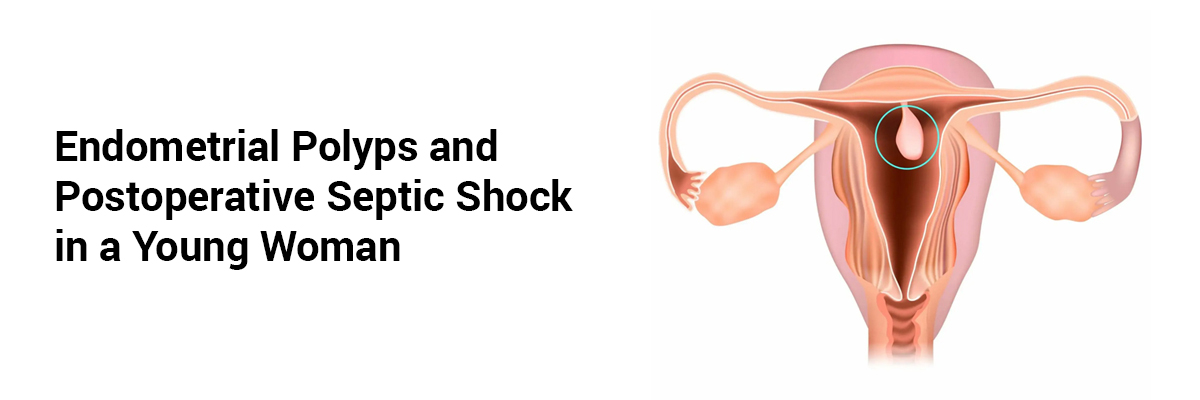
 IJCP Editorial Team
IJCP Editorial Team
Endometrial Polyps and Postoperative Septic Shock in a Young Woman
A report describes a case
of a 23-year-old woman with a BMI of 18.2 kg/m2 who was admitted due to the
presence of endometrial polyps (EPs) that had been detected over six months
ago. Prior examination of ovarian reserve function revealed low anti-Müllerian
hormone (AMH) levels (<1 ng/ml), indicating primary ovarian insufficiency.
The patient had regular menstruation and no history of pregnancy.
More than six months ago,
she tested positive for mycoplasma, bacteria, and fungi in her vaginal
discharge. Treatment with "nifuratel nystatin vaginal soft capsules and
doxycycline hyclate tablets" successfully eradicated the mycoplasma and
bacteria, but the fungal infection persisted. Subsequent treatment with
"clotrimazole tablets" did not show any improvement. Fortunately, the
fungal infection eventually cleared after receiving "fluconazole
tablets." Consequently, the patient was admitted for hysteroscopic
surgery, as she had been unable to conceive for over six months.
During the operation, a
catheter was inserted into the uterine cavity, and 20 mL of physiological
saline was injected without encountering any significant resistance, indicating
unobstructed fallopian tubes. Hysteroscopy revealed the presence of five polyps
within the uterine cavity, with the largest measuring approximately 0.8 cm x
0.5 cm and the smallest around 0.3 cm x 0.3 cm. All polyps were excised at
their base using rotational movements of the inner blade, and the abraded
fragments were aspirated and sent for pathological examination. The procedure
was successfully completed within approximately eight minutes.
However, around three hours
post-surgery, the patient developed mild lower abdominal pain, along with
elevated body temperature (up to 38.7°C), heart rate (ranging from 92 to 120
beats per minute), respiratory rate (reaching 27 breaths per minute), and
hypotension (approximately 72-83/35-54 mmHg). Laboratory examination indicated
decreased white blood cell count, increased proportion of neutrophils, and
significantly elevated infection markers, including hypersensitive C-reactive
protein, procalcitonin, and interleukin levels. Considering the clinical
manifestations and laboratory findings, the patient was diagnosed with
postoperative septic shock. Consequently, she was transferred to the intensive
care unit (ICU) and initiated on piperacillin-tazobactam combined with
tinidazole for anti-infective treatment. Vasoconstriction was achieved using
epinephrine, and the patient received fluid replacement and albumin
supplementation. With treatment, the patient's condition gradually improved,
characterized by stable vital signs, a progressive decline in white blood cell
count, and normalization of infection markers. The blood culture obtained
during this time yielded negative results. Subsequently, on the third day after
the operation, she was transferred back to the gynecology ward. Following a
10-day course of antibiotic therapy, an abdominal ultrasound revealed a small
amount of effusion. The patient's white blood cell count and various infection
markers returned to normal before discharge.
Danna Su, Jiajie She, Ying Li et al. Case report: Septic shock after endometrial polypectomy with tissue removal system. 2023. PREPRINT (Version 1) available at Research Square [https://doi.org/10.21203/rs.3.rs-2665154/v1]

IJCP Editorial Team
Comprising seasoned professionals and experts from the medical field, the IJCP editorial team is dedicated to delivering timely and accurate content and thriving to provide attention-grabbing information for the readers. What sets them apart are their diverse expertise, spanning academia, research, and clinical practice, and their dedication to upholding the highest standards of quality and integrity. With a wealth of experience and a commitment to excellence, the IJCP editorial team strives to provide valuable perspectives, the latest trends, and in-depth analyses across various medical domains, all in a way that keeps you interested and engaged.





















Please login to comment on this article